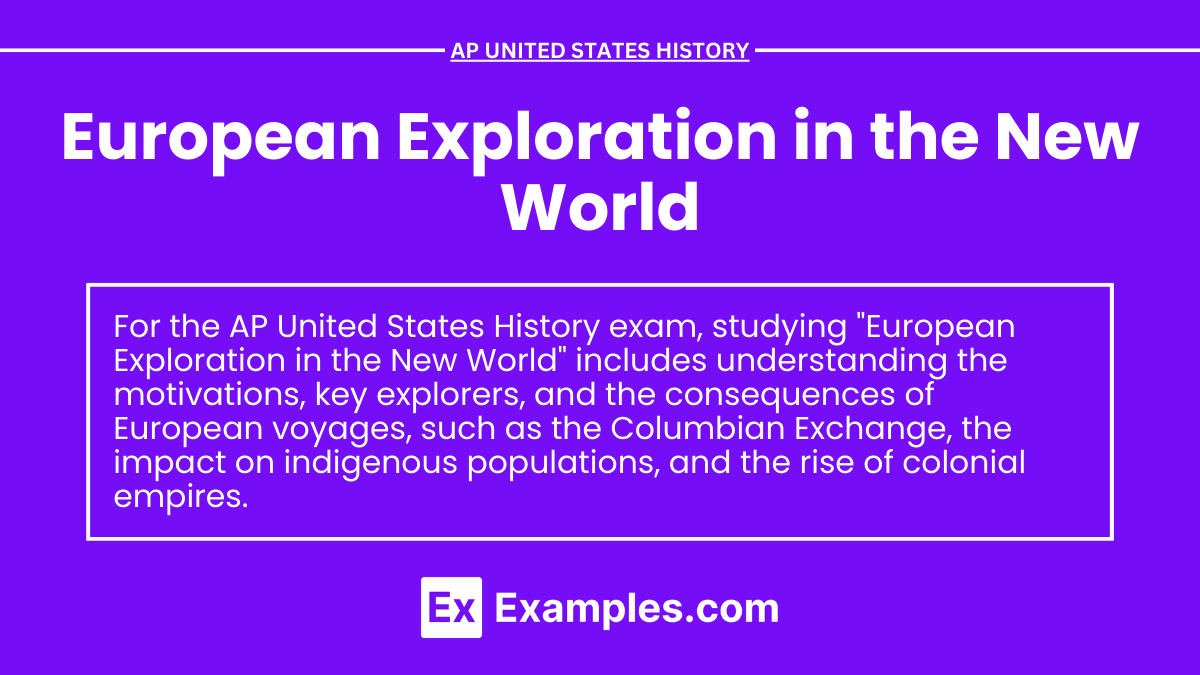In AP United States History, the exploration of the New World by European powers marks a pivotal chapter in the development of the Americas. Beginning in the late 15th century, driven by economic ambitions, political rivalry, and religious fervor, European nations embarked on voyages that would forever change the course of history. These explorations led to the discovery, colonization, and exploitation of vast new territories, setting the stage for the Columbian Exchange and the profound impacts on indigenous societies and global dynamics.
Learning Objectives
In studying European Exploration in the New World, you will be introduced to the motivations behind European voyages, including economic, political, and religious factors. The key explorers and their achievements will be explored, highlighting their contributions to global exploration. You will gain an understanding of the significant consequences of these explorations, including the Columbian Exchange, the impact on indigenous populations, and the establishment of colonial empires. The technological advancements that facilitated these explorations will also be examined.
Motivations for Exploration
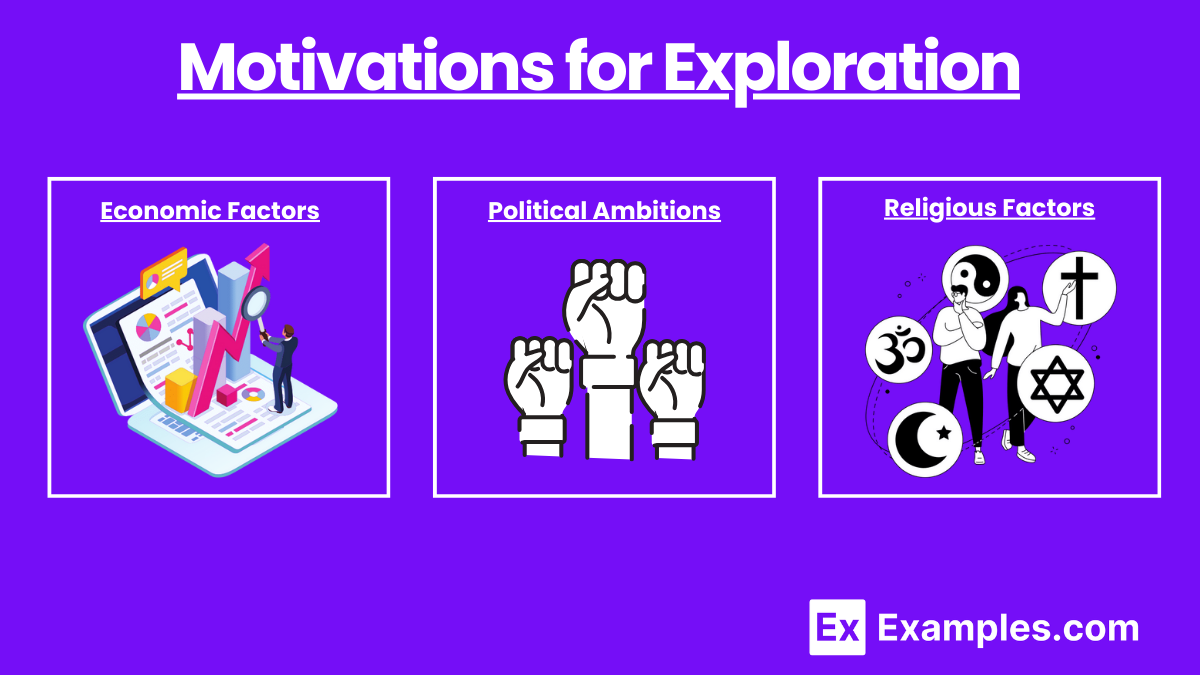
Economic Factors: The desire for new trade routes to access the wealth of Asia, particularly spices, silk, and precious metals, was a primary driver of European exploration. The search for gold and other resources also motivated expeditions.
Political Ambitions: European nations, particularly Spain, Portugal, France, and England, were eager to expand their influence and power by claiming new territories. The competition among these nations fueled the race to explore and colonize the Americas.
Religious Factors: The spread of Christianity was a significant motivation, especially for Spain and Portugal. The Catholic Church supported these efforts, leading to the evangelization of indigenous peoples and the establishment of missions in the New World.
Key Explorers and Their Achievements
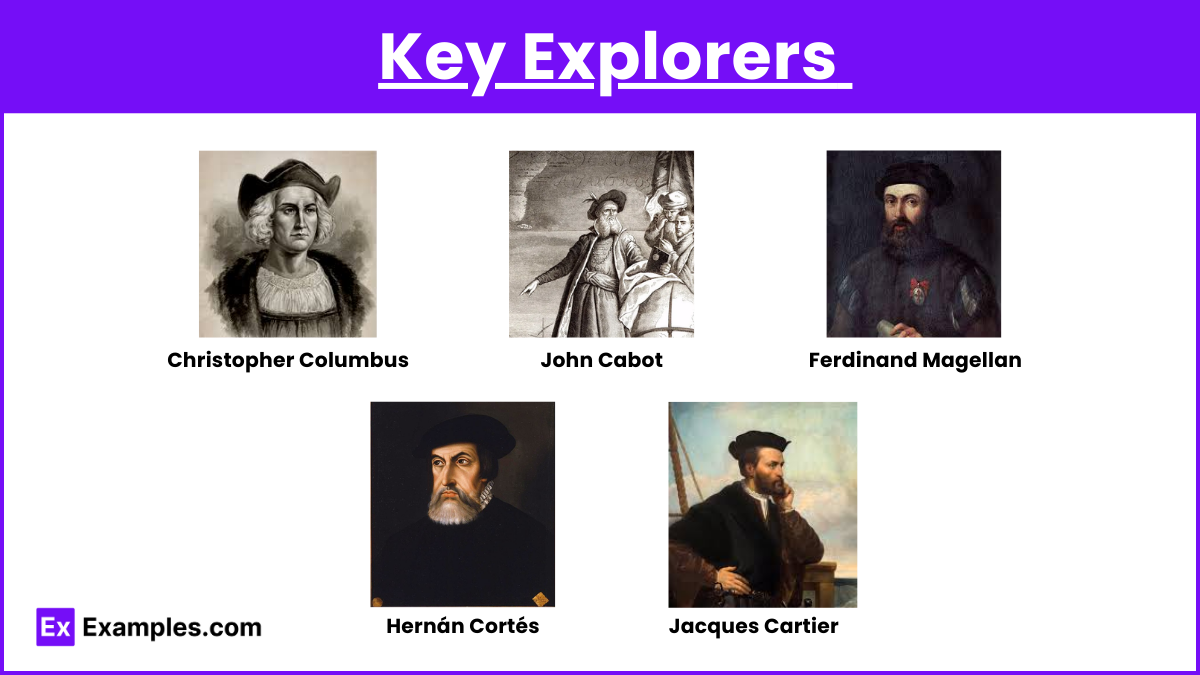
Christopher Columbus (1492): Sponsored by Spain, Columbus’s voyages led to the European discovery of the Caribbean and Central America. Though he believed he had reached Asia, his expeditions opened the door to European colonization in the Americas.
John Cabot (1497): An Italian explorer sailing for England, Cabot’s exploration of the North American coast paved the way for later English claims to territory in the New World, particularly in what would become Canada.
Ferdinand Magellan (1519-1522): Although Magellan himself did not survive the journey, his expedition was the first to circumnavigate the globe. His voyage proved the vastness of the Earth and confirmed that the Americas were separate from Asia.
Hernán Cortés (1519-1521): A Spanish conquistador, Cortés led the expedition that caused the fall of the Aztec Empire in Mexico. His conquest marked the beginning of Spanish dominance in the Americas.
Jacques Cartier (1534): A French explorer who claimed what is now Canada for France. Cartier’s explorations of the St. Lawrence River laid the foundation for French claims in North America.
Consequences of Exploration
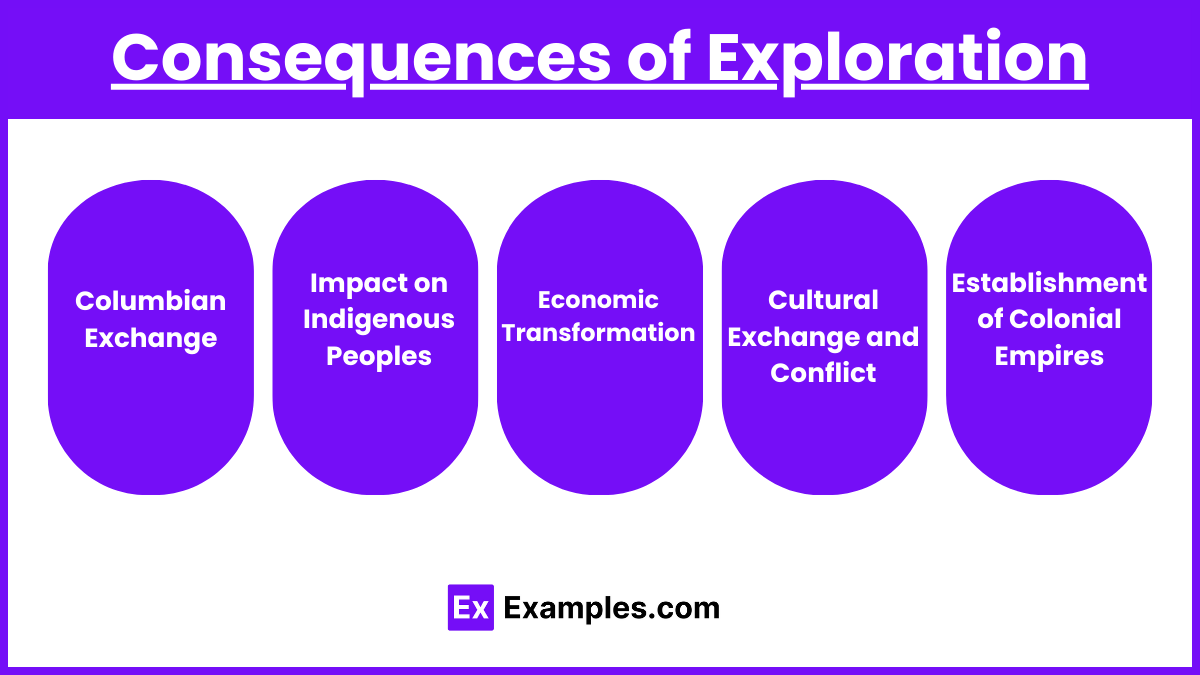
Columbian Exchange: The exchange of goods, ideas, plants, animals, and diseases between the Old World and the New World had profound effects on both continents. While crops like potatoes and maize were introduced to Europe, Old World diseases devastated indigenous populations in the Americas.
Impact on Indigenous Peoples: European exploration led to the colonization of the Americas, resulting in the displacement, enslavement, and significant population decline of Native American societies due to warfare and disease.
Economic Transformation: The influx of gold and silver from the Americas into Europe led to significant economic changes, including inflation and the rise of capitalism. European economies became increasingly connected to the global trade network established during this period.
Cultural Exchange and Conflict: European explorers and settlers imposed their cultures, languages, and religions on indigenous peoples, often leading to cultural erasure and conflict. However, there were also instances of cultural blending and adaptation.
Establishment of Colonial Empires: The exploration of the New World laid the groundwork for the establishment of vast colonial empires, particularly by Spain and Portugal, followed by France, England, and the Netherlands. These empires would dominate global politics and economics for centuries.
Technological Advances
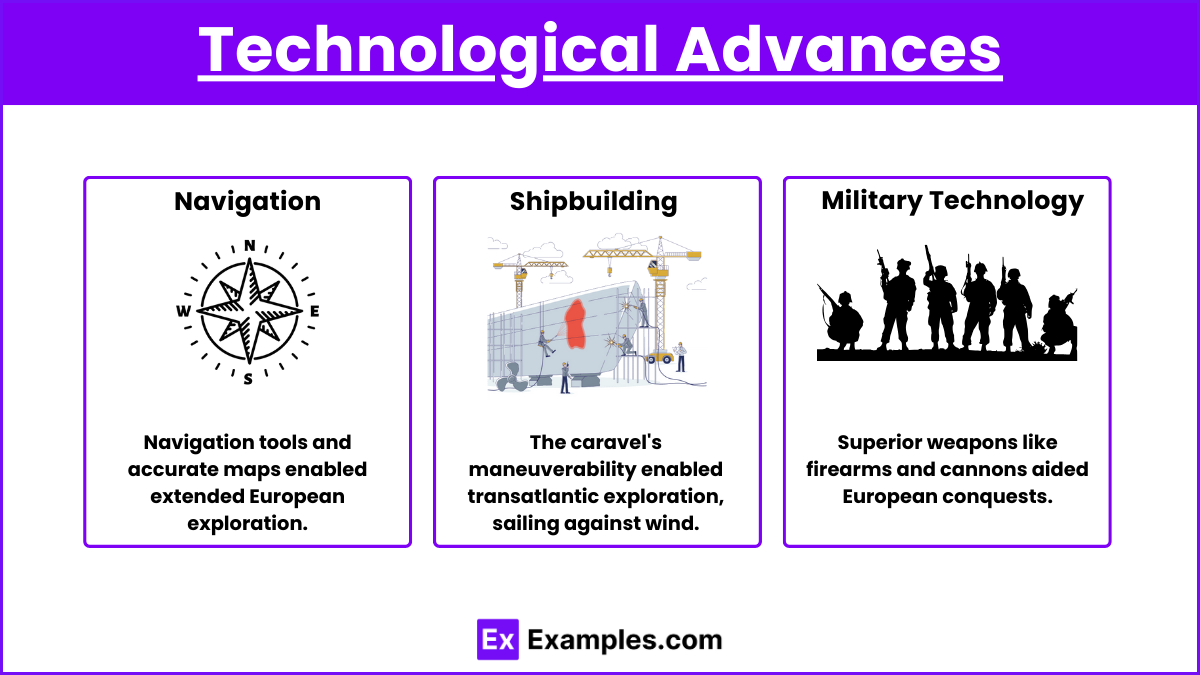
Navigation: Advances in navigation, including the use of the astrolabe and magnetic compass, allowed European explorers to venture farther from their home ports. The development of more accurate maps also facilitated long-distance travel.
Shipbuilding: The development of the caravel, a small, highly maneuverable ship, made it possible for explorers to travel across the Atlantic Ocean. The caravel’s ability to sail against the wind was a significant technological breakthrough.
Military Technology: European explorers often had superior weapons, such as firearms and cannons, which played a crucial role in their conquests and interactions with indigenous peoples.
Examples
Christopher Columbus: His 1492 voyage, sponsored by Spain, led to the European discovery of the Americas. Though he sought a new route to Asia, his expeditions marked the beginning of European colonization in the New World.
Ferdinand Magellan: His expedition (1519-1522) was the first to circumnavigate the globe, proving the vastness of the Earth and confirming the Americas as a separate landmass from Asia.
Hernán Cortés: The Spanish conquistador who, from 1519 to 1521, led the expedition that resulted in the fall of the Aztec Empire, initiating Spanish dominance in Mexico.
The Columbian Exchange: The massive exchange of goods, plants, animals, and diseases between the Old World and New World following European exploration. It transformed economies and populations on both sides of the Atlantic.
The Treaty of Tordesillas (1494): An agreement between Spain and Portugal, mediated by the Pope, which divided the newly discovered lands outside Europe between the two countries along a meridian 370 leagues west of the Cape Verde islands.
Multiple Choice Questions (MCQs)
What was the primary motivation for European nations to explore and colonize the New World?
A. To escape religious persecution
B. To establish scientific research outposts
C. To access new trade routes and resources
D. To find a direct route to Australia
Answer: C
Explanation: The primary motivation for European exploration was economic, specifically the desire to find new trade routes to Asia and access valuable resources like gold, spices, and other riches.
Which explorer’s voyage was the first to circumnavigate the globe?
A. Christopher Columbus
B. Ferdinand Magellan
C. Vasco da Gama
D. John Cabot
Answer: B
Explanation: Ferdinand Magellan’s expedition, which began in 1519, was the first to circumnavigate the globe. Although Magellan himself was killed in the Philippines, his crew completed the journey.
What was one significant consequence of the Columbian Exchange?
A. The spread of European political systems to Africa
B. The introduction of Native American religions to Europe
C. The widespread transfer of plants, animals, and diseases between the Old and New Worlds
D. The establishment of a unified global language
Answer: C
Explanation: The Columbian Exchange led to the widespread transfer of plants, animals, and diseases between Europe, Africa, and the Americas. This had profound effects on the economies, populations, and environments of both the Old and New Worlds.

